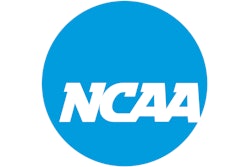Health Savings Accounts give employees spending power and cut employers' insurance costs

The rising cost of providing health insurance is a front burner issue that has pushed many employers, particularly owners of small businesses, to their boiling points. Nationwide, premium increases have registered in the double digits for three consecutive years, according to surveys conducted by the Menlo Park, Calif.-based Kaiser Family Foundation. The Midwest Business Group on Health, a Chicago-based consortium of 80 employers, reports that for businesses with fewer than 50 employees, premium increases range anywhere from 18 to 35 percent.
Given these sobering statistics, operators of fitness facilities - many of which fall into the small-business category - might feel they have no choice but to drop health-care coverage for their employees. But taking such drastic action would be premature. Facility owners and operators do have another option: the Health Savings Account (HSA).
Created through the enactment of the Medicare Prescription Drug, Improvement and Modernization Act of 2003, the HSA is touted by its proponents as a vehicle that will reduce wasteful medical spending by appealing to employees' self-interest. The HSA puts employees in control of their personal medical spending, allowing them to deduct from their gross income tax-free contributions that are set aside in personal accounts used to pay their medical expenses and those of their dependents.
Because the federal government considers HSAs to be employer-provided coverage for health-care expenses, employer contributions to an employee's HSA are also tax-deductible.
"There is likely to be an explosion of employer interest in HSAs," says Mark Wincek, a partner in the Washington office of national law firm Kilpatrick Stockton and head of its benefits and compensation practice. "These programs allow consumers to actually function like consumers. That reflects a genuine paradigm shift."
It seems that many business owners are ready to accept HSAs as the new standard. HSAs officially took effect Jan. 1, and although an expanded rollout of HSA products is expected this summer, there might not be widespread availability until 2005 when the next cycle of insurance enrollment starts for many companies. According to a recent survey conducted by New York City-based Mercer Human Resource Consulting, three out of four employers say they will consider implementing HSAs in the near future. Nearly one in five employers are "very likely" to offer HSAs to their employees by 2006, and more than half are "somewhat likely" to do so.
Still, some facility owners might wonder why HSAs are receiving so much attention. After all, aren't they just like Archer Medical Spending Accounts (MSA), which have been available since 1996?
In some respects, they are similar. HSAs combine two financial vehicles: The first, as noted, is a personal, employee-owned savings account holding funds earmarked for future medical needs. The second is a high-deductible health insurance plan (HDHP), which is loosely defined as a health plan with high deductibles and out-of-pocket expenses.
Eligibility for participation in an HSA is dependent on one's enrollment in an HDHP. (The employee cannot also be covered by a non-HDHP, nor can he or she be entitled to Medicare benefits.) HSAs begin to pay expenses when an employee's medical expenses exceed a specified deductible.
The annual deductible for those with individual HDHP coverage must be at least $1,000, while out-of-pocket expenses (which includes deductibles and co-payments) must not exceed $5,000. For families, the HDHP must require from the insured a minimum $2,000 annual deductible and no more than $10,000 in out-of-pocket expenses.
Allowable contributions are based on those deductibles. Each month, an employee with individual coverage may contribute 1⁄12th of the lesser of either 100 percent of the annual HDHP deductible or $2,600. An employee with family coverage may contribute 1⁄12th of the lesser of 100 percent of the annual HDHP deductible or $5,150. For example, an individual whose HDHP annual deductible is $3,000 can contribute no more than $2,600 each year (or $216.67 per month) to his or her HSA.
This is where things get interesting. Rules regarding contributions are vastly different for MSAs than for HSAs, which actually operate more like Individual Retirement Accounts (IRAs). MSAs do not allow unused balances to carry over to the next year. However, HSA contributions may accumulate from year to year, and at retirement can be withdrawn (and used for either medical or non-medical purposes) by the employee without penalty.
While the employee is a part of the workforce, money withdrawn is not taxable if it is used to pay for qualified medical expenses including specialist visits, drugs and long-term-care services, as well as the purchase of continued health-care coverage for the unemployed individual via COBRA. (Funds withdrawn for non-medical purposes will be included in the account holder's gross income, taxed accordingly and subject to a 10 percent penalty.) The interest and investment earnings generated by the account are also not taxable while they remain in the HSA.
Thus, there's an incentive for an employee to use his or her HSA wisely: An individual who spends prudently on medical care ends up with more cash in his or her pocket. "As an employee, I know that I will save money if I take a little more active role in my health," says Marcus B. Newman, an employee benefits consultant at GCG Financial, an insurance services firm in Bannockburn, Ill. "It encourages me to be more attentive."
An employee's penny-pinching can also benefit his or her employer. Employees vested with control over their own medical spending will likely choose to spend less. Industry experts anticipate that a decrease in consumer medical spending will force the market to stabilize fluctuating insurance premiums, and eventually make premiums affordable for most employers - especially for smaller organizations facing large premium hikes. Newman gives an example: One of his clients has three employees enrolled in a traditional health insurance plan. The carrier raised its premium rates by 39 percent, bringing the client's monthly insurance costs to $3,700. By switching to an HSA with a monthly outlay of $3,072, the company will save nearly $8,000 in annual premiums.
Another attractive feature of the HSA is that employers are not required to make any contributions to employee savings accounts, although they may opt to do so. "Employers who have been thinking of getting out of the business of providing health care altogether may feel better about switching to HSAs," says Wincek.
While HSAs seem like an imaginative solution to the health insurance puzzle, there is a hidden cost: The programs require employees to shoulder more responsibility for their own insurance plans. That means a level of labor and attention to detail to which many individuals are likely unaccustomed.
First, the employee must make sure to file the proper paperwork for each healthcare expenditure. Second, the employee must make sure each expenditure is allowed under the terms of the HDHP policy. "HSA funds need to be used wisely or there won't be enough money left over to pay for necessary medications and procedures," says Wincek.
The imperative, then, is clear: Employees will need to sit down and read the lengthy fine print of the insurance policy's "Explanation of Benefits" (EOB) to figure out what procedures are reimbursable. "In the past, people have tossed their EOBs into the garbage," says Newman. "With an HSA plan, you absolutely have to read them."




































